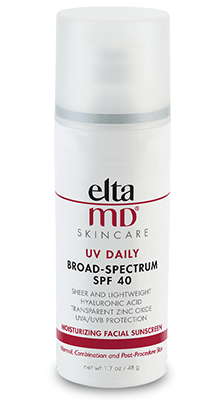One way to distract, uplift and energize your mood during our COVID-19 hibernation is to make a move on improving your long-term skin appearance and skin health.

…you can reverse years of sun-damage from the comfort of your own home
Nevertheless, with or without a virtual visit to your dermatologist, the single most cost-effective way to maintain your freshly renewed skin is to apply sunscreen daily. The American Academy of Dermatology strongly endorses daily sunscreen use even if you don’t plan to be in the sun. We Southern Californians are bombarded with surprisingly high doses of aging sun rays even during brief walks and through our house and car windows. Daily sunscreen has been proven to make a big impact in reducing the harmful effects of UV exposure including a whopping 50% reduction in the incidence of malignant melanoma– the most serious type of skin cancer. Also, your average high-end department store anti-aging cream can’t compete with the clock-stopping effects of an excellent sunscreen. In a study comparing daily vs. occasional sunscreen use over 4 years, the daily use group was judged on average to look the same age at the end of 4 years when compared to how they looked at the start.

- Elta MD UV Daily
- La Roche-Posay Anthelios Ultra-Lite Tinted Mineral
- Avène Mineral Fluid
- Neutrogena Ultra Sheer Dry Touch
With easy to incorporate daily sun protection maneuvers and dermatologist-tailored skin rejuvenating interventions, we will finally all emerge from our quarantine cocoons with at least renewed, flawless and healthier skin to show for it. Wishing you a safe and gratitude-filled home life during these challenging times .



